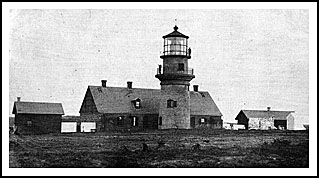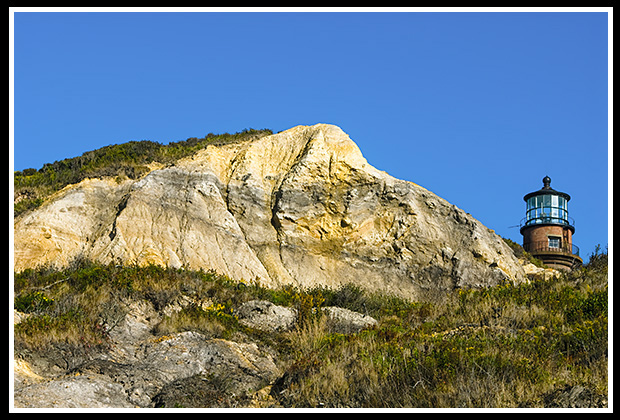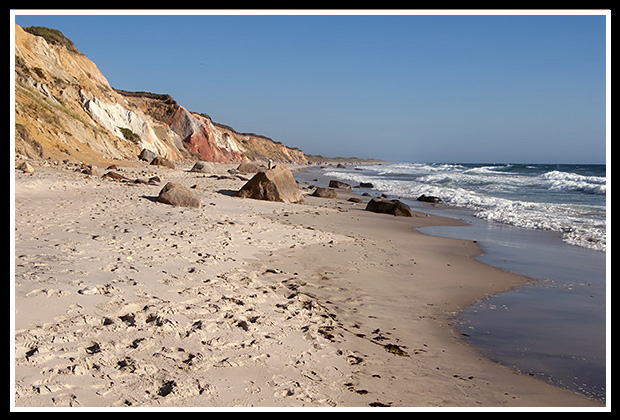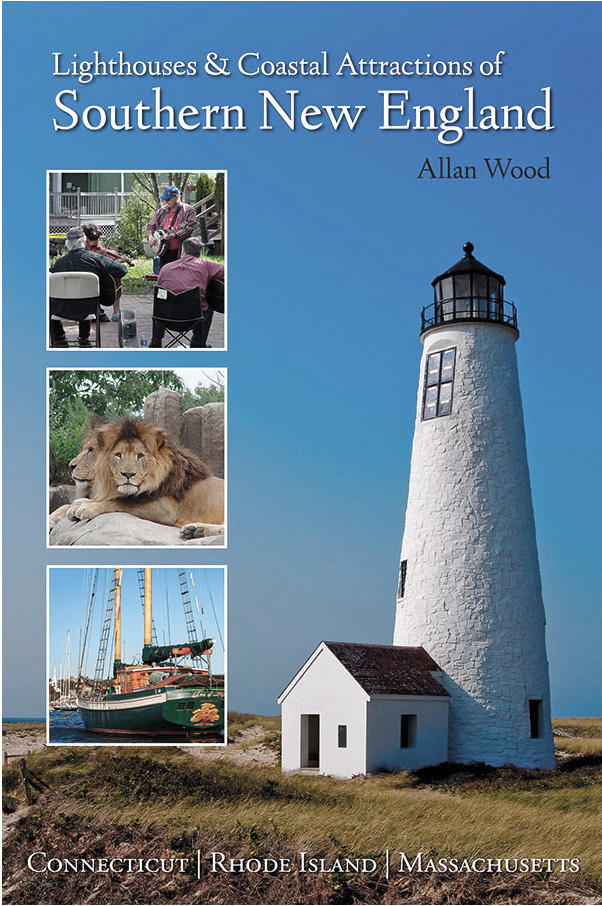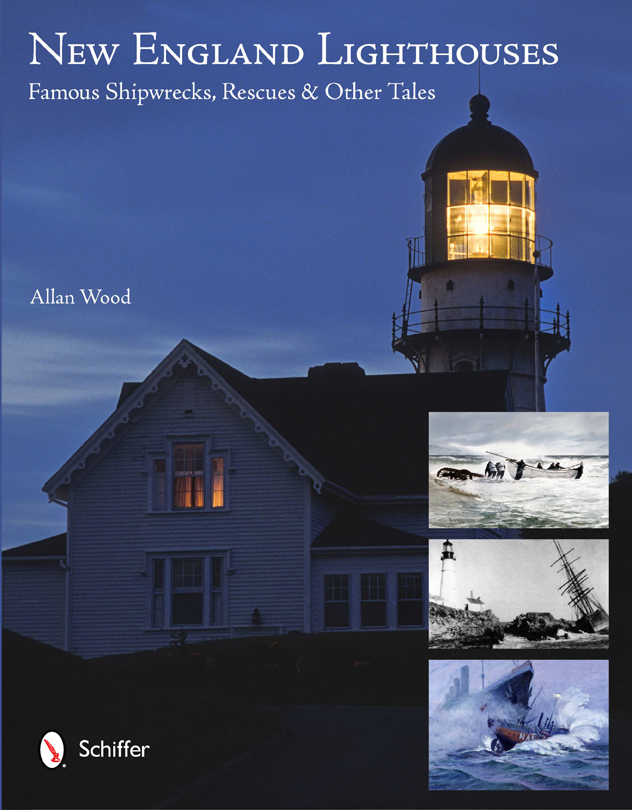Gay Head (Aquinnah) Lighthouse
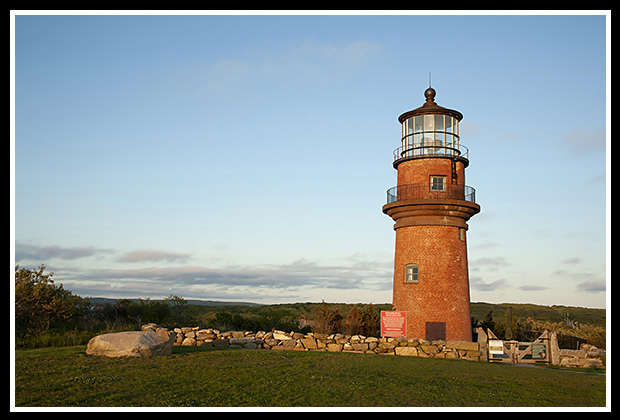
Aquinnah, Martha's Vineyard, Massachusetts
Built in 1799
Location:
Located at the extreme western tip of Martha's Vineyard in the Native American region of Aquinnah. The grounds around the lighthouse are open to the public.
Latitude: 41° 20' 54" N
Longitude: 70° 50' 06" W
Historic Stories:
The original lighthouse was built as a wooden structure in 1799. The first keeper was Ebenezer Skiff, who was also the first white man to live in the town of Gay Head, since all others were members of the Wampanoag Indian tribe, with generations still living there today. During his 29 years at the lighthouse, he also helped the town by becoming its teacher for their children.
In 1844, with the constant eroding of the cliffs, the tower had to be moved back about 75 feet from the edge of the bluff.
| In 1856, the current brick and brownstone tower replaced the original wooden lighthouse built in 1799. |
Early Gay Head Lighthouse |
A huge first order Fresnel lens with 1008 prisms was also installed at that time.
The current Gay Head Lighthouse sits 130 feet above the sea on multicolored clay cliffs on the Western side of Martha's Vineyard, where an underwater ledge known as the Devil's Bridge with rocks that reach out from the Gay Head Cliffs threatens ships that enter into Vineyard Sound and the main route to Boston Harbor from the south.
Wampanoag Native American Lifesavers Help to Rescue 21 of 29 Survivors
One of New England's worst marine disasters occurred on a dangerous ledge offshore from the lighthouse, named Devil's Bridge, with the sinking of the City of Columbus. Fighting gale force winds in the early morning hours before sunrise, on January 18, 1884, the passenger steamer ran aground on the ledge. In less than half an hour in the cold freezing waters, 100 persons on board drowned. Lighthouse Keeper Horatio N. Pease witnessed the wreck as dawn broke and notified Chief Simon Johnston of the Gay Head Life Saving Station nearby to arrange rescue crews of Wampanoag volunteers.
Keeper Pease and Chief Johnston coordinated three lifeboat crews of the Wampanoag Native Americans from Gay Head Light and the station to rescue those that were able to hang on long enough to the rigging to be rescued. Upon notification of the City of Columbus in distress, the revenue cutter Dexter arrived on the scene to help. Together all rescue crews were able to save 29 survivors from the freezing waters. The Wampanoaug crew themselves were responsible for the rescue of 21 members of the doomed ship. Each of the Wampanoag volunteers received rare silver or bronze medals for their bravery by the Massachusetts Humane Society.
Note: For more explicit details regarding this famous story, select the link "Rescue by Wampanoag Lifesavers" Blog at the top of the page to be directed to my Lighthouse Stories blog.
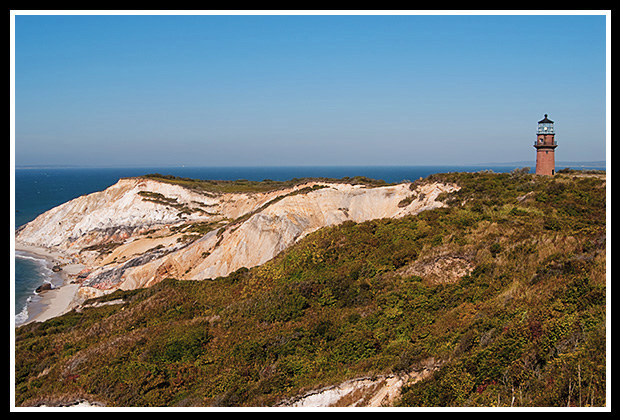
This coordination of the branches of Lighthouse Service, Life Saving Service, and Revenue Cutter Service in working together to save survivors of the City of Columbus became one of the first successful attempts in using this approach. Over the years many more of these organized rescues were made between the life saving branches of service. These three rescue branches evolved into our current Coast Guard in 1915.
Charles Vanderhoop, an Aquinnah Wampanoag Indian, became one of the light's most popular keepers known for his openness in allowing many tourists and locals to enjoy the view from the top of Gay Head light during his service from 1910 through 1933.
In 1998, the name of the town of Gay Head was changed to Aquinnah, meaning "Land Under the Sun," to better reflect the Wampanoag heritage. Today, the Wampanoag Tribe, who are very protective of the fragile clay cliffs and its spiritual connection with the sea, owns the land surrounding Gay Head Light.
In the fall of October 2013, the original stone foundation that contained the wooden lighthouse built in 1799 was found.
| This provided an opportunity to be able to calculate the rate of erosion from 1799 to the present, as the current lighthouse was in danger of falling over the cliffs. |
Gay Head Lighthouse |
Property was purchased next to the beacon to move the lighthouse, and 3 million dollars in funds was raised to move the threatened lighthouse. In 2015, the lighthouse was moved away from the sandy cliffs to its current location. Before it was moved it was considered to be one of the most endangered lighthouses in the country.
Places to Visit Nearby:
The best views of the lighthouse and cliffs are from a scenic lookout near the small strip of shops and restaurants at Gay Head operated by many of the tribal members. The cliffs are closed to the public because of erosion concerns, but the lighthouse is opened by the Martha's Vineyard Historical Society on weekends from just before sunset until a half hour after sunset during the summer season.
Moshup Beach |
The beaches below the cliffs of Gay Head are enjoyed by many, including nudists as a way of spiritual connectivity. |
The Martha’s Vineyard Museum offers sunset tours of the lighthouse area during the summer months.
The original huge first order Fresnel lens can be viewed at the Martha’s Vineyard Historical Society and Museum in Edgartown.
The Wampanoag tribe, one of the few federally recognized tribes in New England, offers many cultural and educational events. The town of Aquinnah, bordered by the town of Chilmark are both very peaceful areas for those that prefer to enjoy quiet and solace. Chilmark has an annual road race for visitors to enjoy.
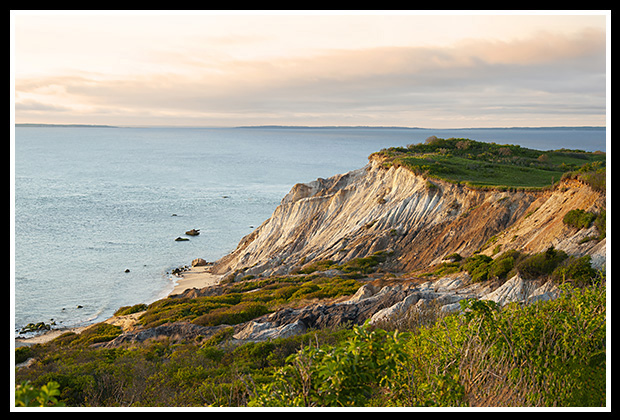
Cliffs of Aquinnah
Wampanoag Tribal Land
Directions:
- From the ferry terminals at Vineyard Haven and Oak Bluffs, follow signs west to Chilmark.
- At Chilmark, continue west on South Road, which will end in a loop at the lighthouse.
Contact Info:
Martha’s Vineyard Museum
P.O. Box 1310
59 School Street
Edgartown, MA 02539
Phone: (508) 627-4441
Island Tours and Ferry Services
Ferries mentioned below involve taking visitors to the islands from either the mainland or between Nantucket and Matha's Vineyard islands. There are also bus and trolley tours avaialble.
Seastreak
Ferry from New Bedford to Martha’s Vineyard
49 State Pier
New Bedford, MA 02740
(800) 262-8743
Hy-Line Cruises
Hyannis-Oak Bluffs ferry; also Nantucket-Oak Bluffs ferry.
220 Ocean Street Dock
Hyannis, Massachusetts 02601
Information: (508) 778-2600
Oak Bluffs (508) 693-0112
Hyannis-Nantucket ferry (508) 778-2602
Island Queen
Ferry from Falmouth, Mass.
297 Dillingham Avenue,
Falmouth, MA 02540.
Phone (508) 548-4800.
Steamship Authority
Ferries to both islands
Vehicle Reservations Call: (508) 477-8600
Office Hours or (508) 693-9130
Fast Ferry Reservations: (508) 495-FAST (3278)
Woods Hole: (508) 548-3788
Vineyard Haven: (508) 693-0367
Oak Bluffs: (508) 693-0125
Hyannis: (508) 771-4000
Nantucket: (508) 228-0262
Rhode Island to Martha's Vineyard Fast Ferry
Ferry from Quonset Point, Rhode Island to Oak Bluffs Marina on a high-speed catamaran.
North Kingstown, RI 02852
Phone: 401-295-4040
Fax: 401-295-4930
Email: info@vineyardfastferry.com
Martha's Vineyard Tours
MVTour.com
Bus and trolley tours of the island.
(508) 693-1555
508-627-TOUR (8687)
Charters 508-693-4681
Books to Explore
New England's Haunted Lighthouses: 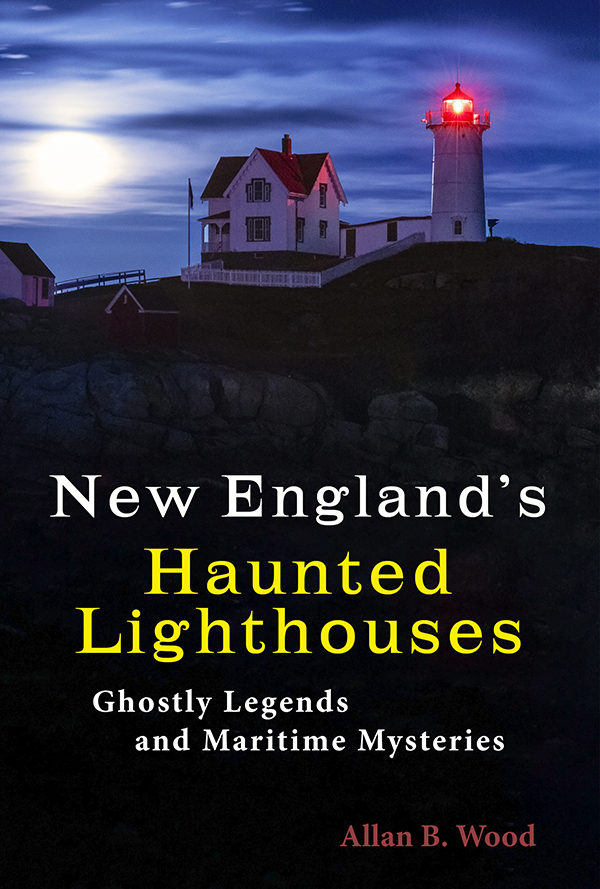
Available in paperback. |
Discover the historical mysteries surrounding the haunted lighthouses of New England! This image-rich book features ghostly tales of devoted keepers who refuse to leave, ghost ships, shipwreck victims, and restless spirits searching for peace. These narratives offer a glimpse into the past, intertwining factual events and history with maritime legends, myths, and lore. Immerse yourself in the spectral stories associated with these iconic beacons! |
Lighthouses and Coastal Attractions of Southern New England: This image-packed book provides lots of special human interest stories from each of the 92 lighthouses along the south New England coast, like more details in the story of the Wampanoag Natvie American Lifesavers mentioned above, along with plenty of additional indoor and outdoor coastal attractions and tours in the area, with contact info to plan your trip. Look inside! |
|
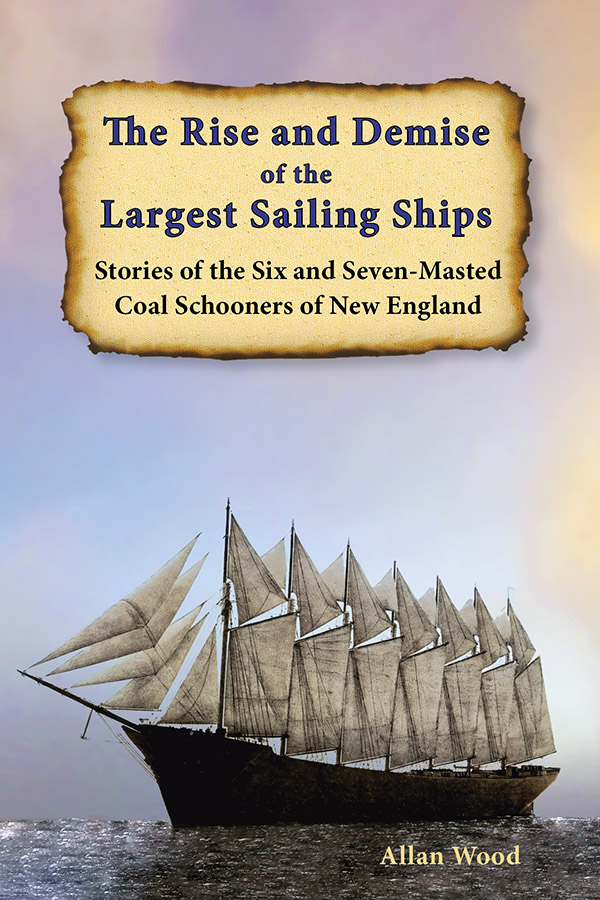 Available in paperback, hardcover, and as an eBook for all devices. |
The Rise and Demise of the Largest Sailing Ships: In the early 1900s, New England shipbuilders constructed the world’s largest sailing ships amid social and political reforms. These eleven giants of sail were built to carry massive quantities of coal and building supplies, and measured longer than a football field! This self-published book, balanced with plenty of color and vintage images, showcases the historical accounts that followed each of these eleven mighty ships. Many of these events occurred while sailing through the dangerous shoals of Cape Cod and the islands during fierce storms. |
New England Lighthouses: Famous Shipwrecks, Rescues & Other Tales This image-rich book contains over 50 stories of famous shipwrecks and rescues around New England lighthouses, and also tales of hauntings. You'll find more details and imagery in the story of the coordinated rescue of survivors of the City of Columbus with the Wampanoag Lifesavers near Aquinnah Light. |
You'll find this book and my lighthouse tourism books from the publisher Schiffer Books, or in many fine bookstores like Barnes and Noble.

